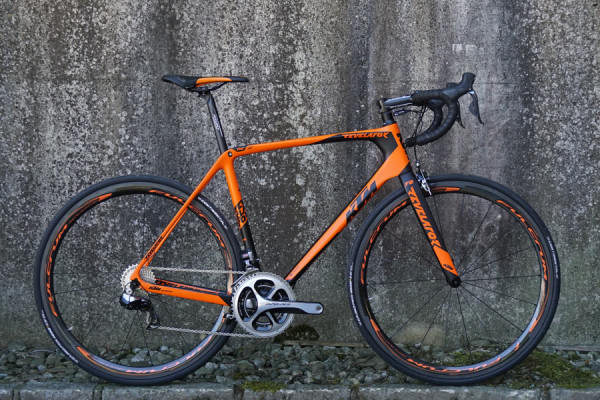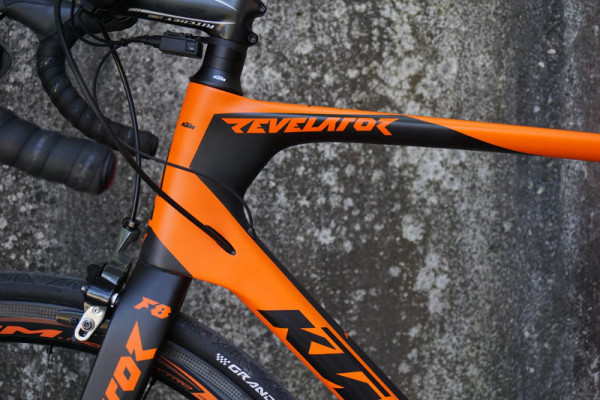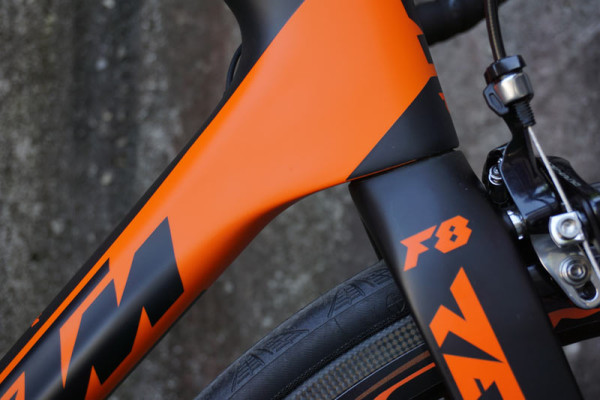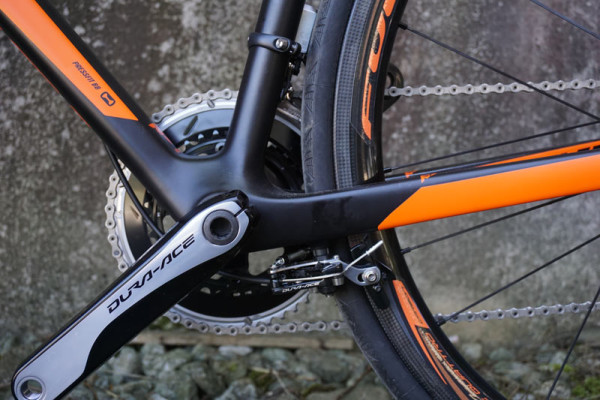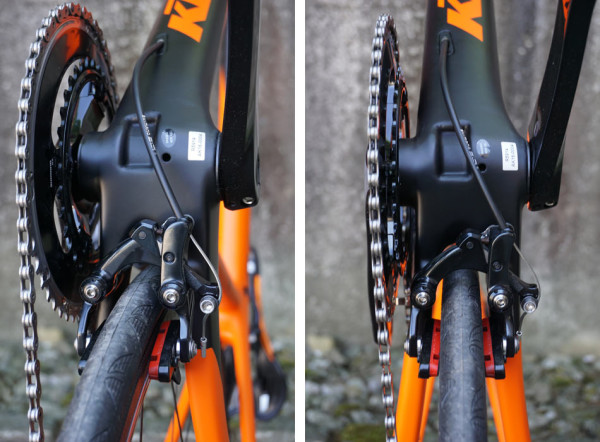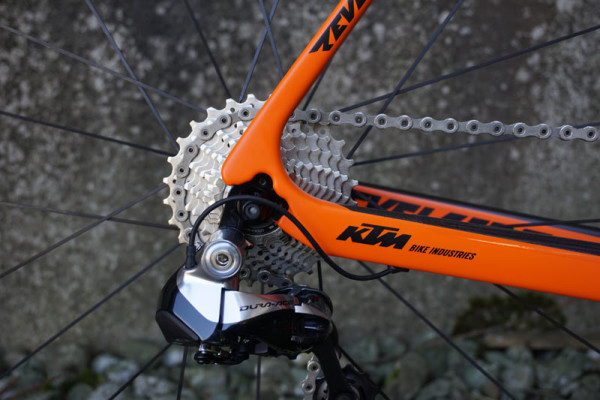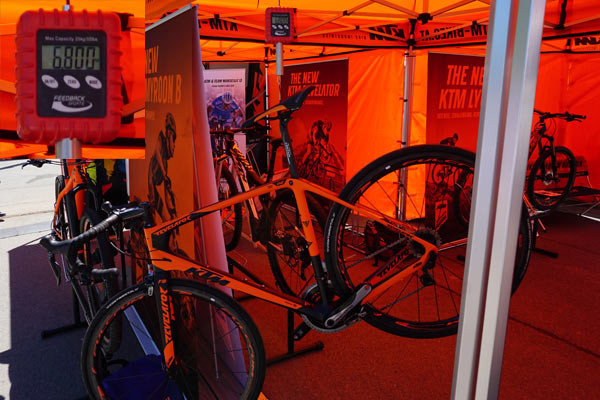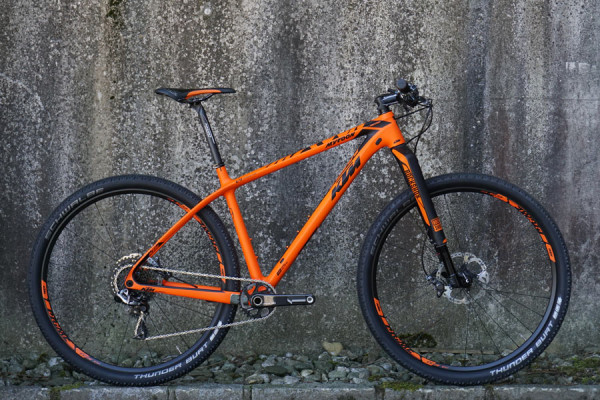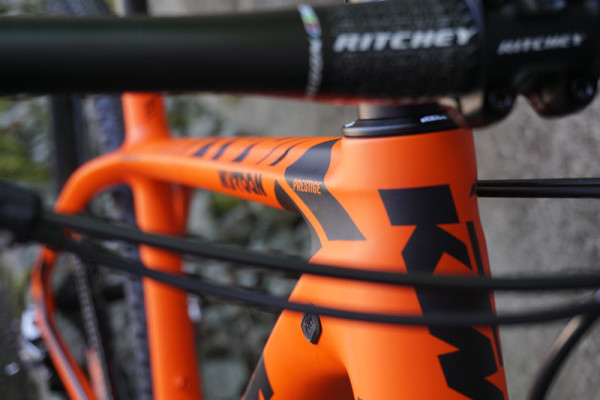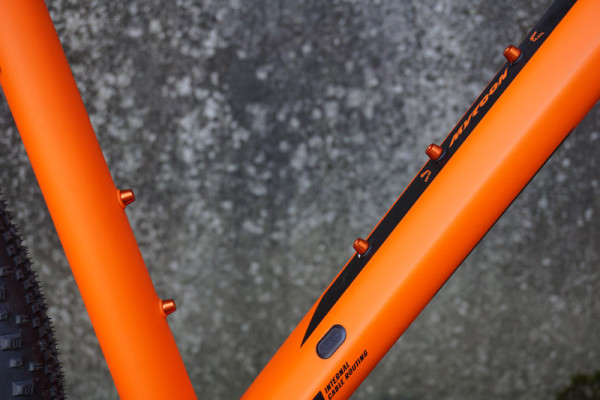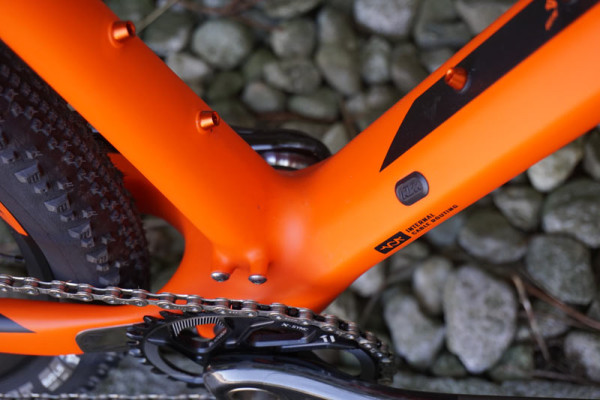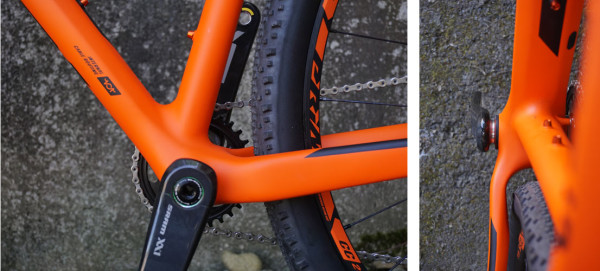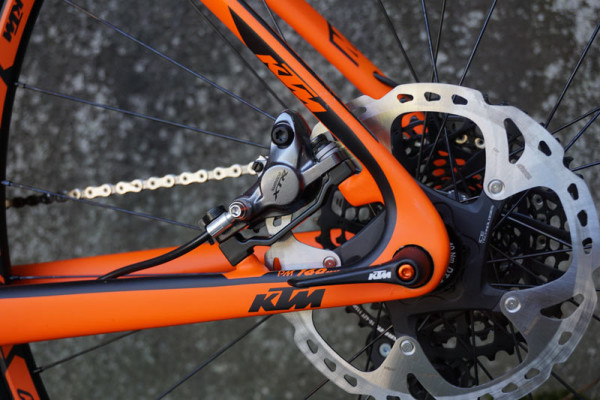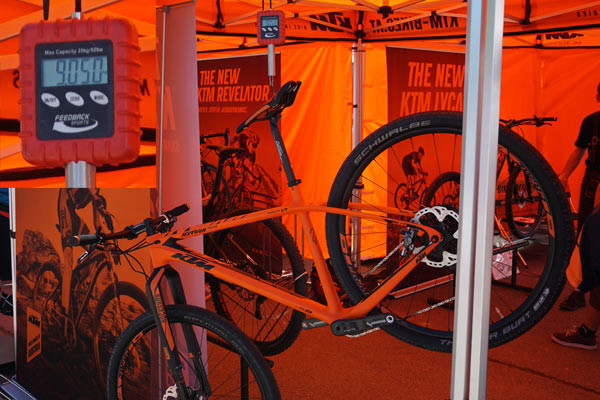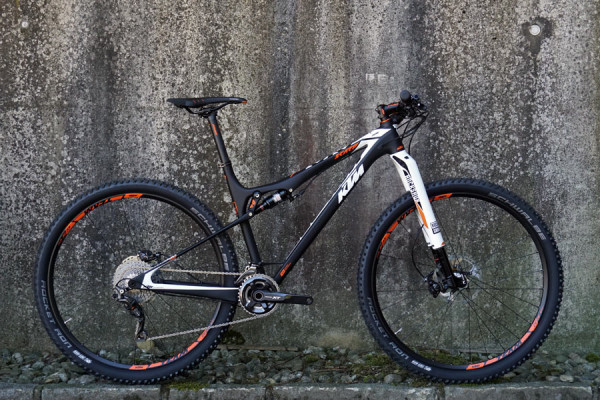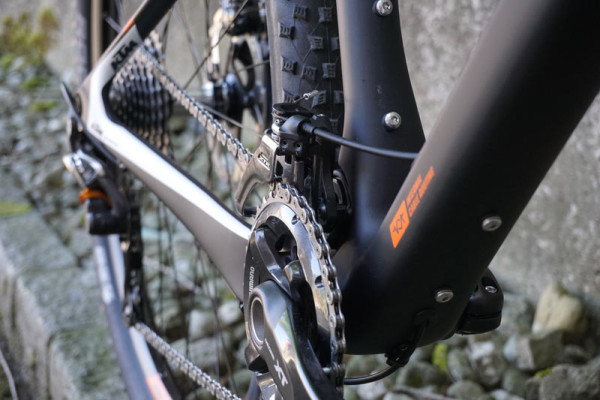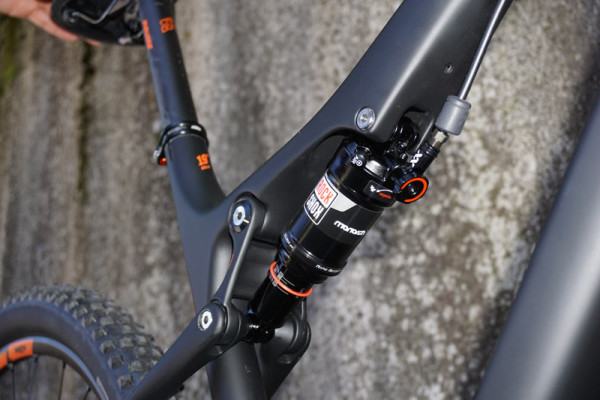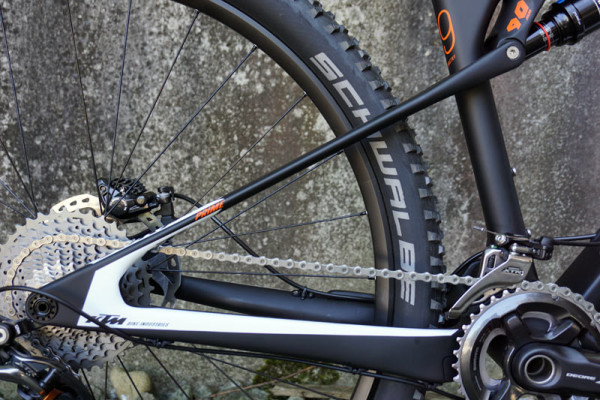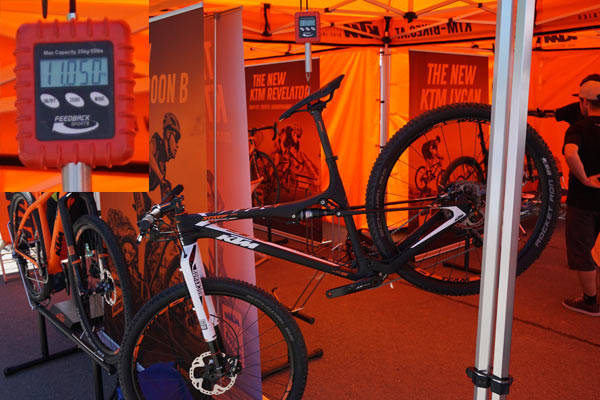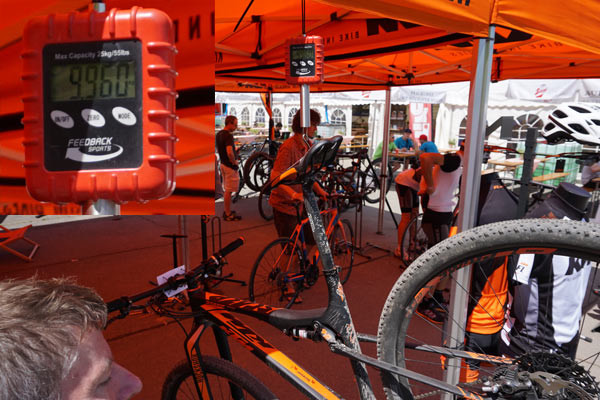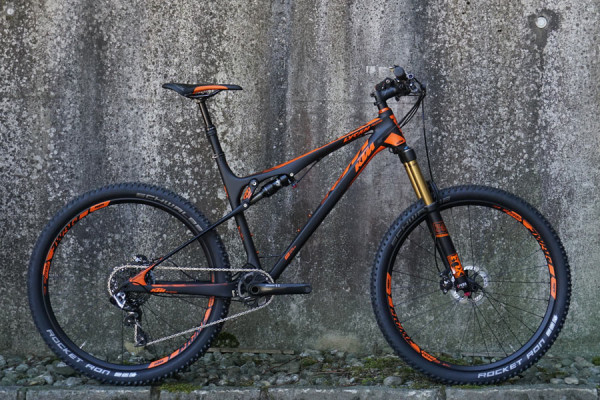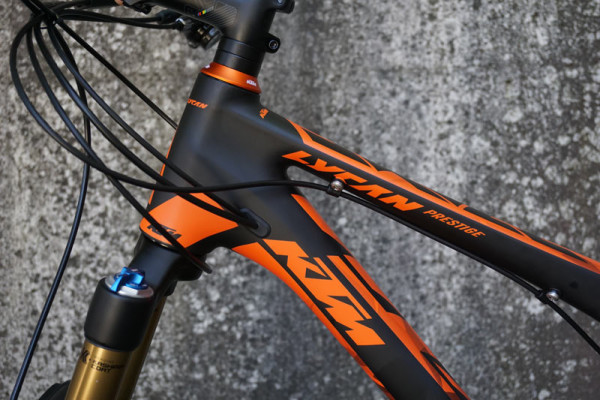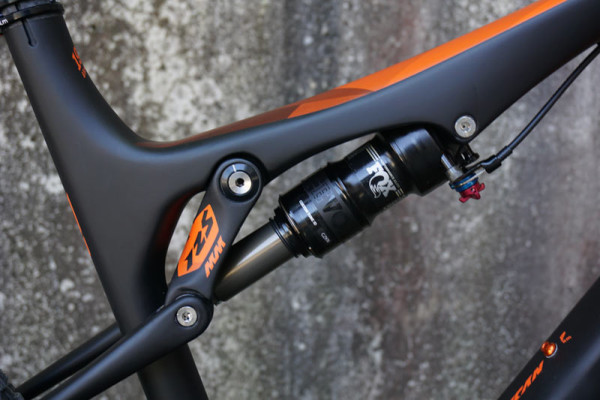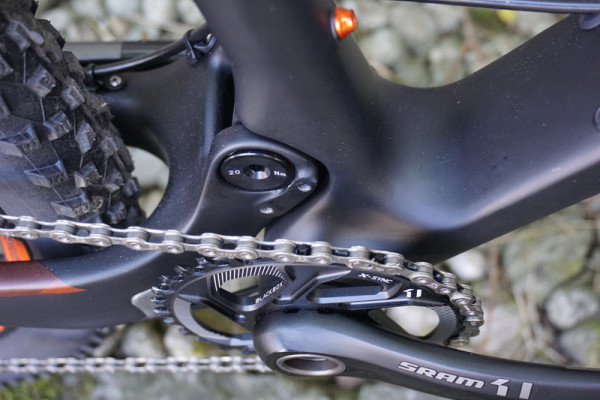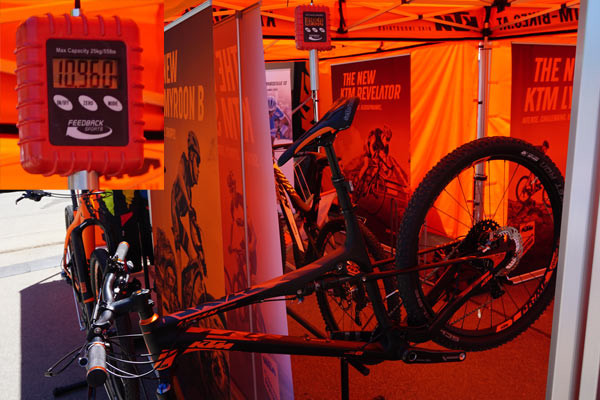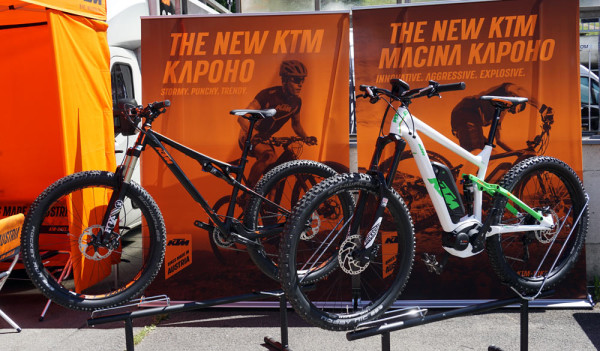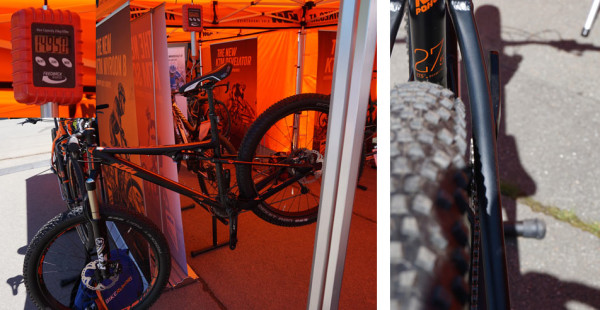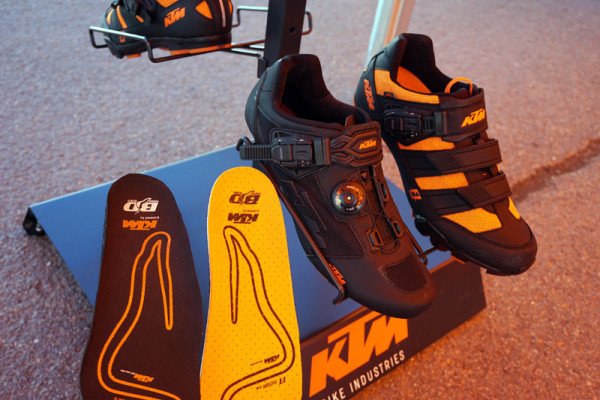For 2016, KTM has given its premiere XC and trail mountain bikes a wider Boost 148 rear end, added a new 27.5+ mid fat full suspension bike to the stable (in regular and motorized!) and created a whole new frame for their top-level Revelator road bike.
Called the Revelator Prime, it’s based on the Marseille 13 pro team bike, but this new one becomes more of a sportif (race) bike with a bit steeper seat tube angle to put the rider over the pedals a bit more.
“But wait,” you say, “the headline says it gets disc brakes!” To which we’d reply: “You’re right, it does. As an option.”
Unfortunately, the only model on hand for photographing was the also all-new rim brake variant, which incorporates all of the same new frame features of the disc model…
Regardless of brake choice, the lines on KTM’s road race bike are well sculpted.
Both front and rear brakes are Shimano’s two-bolt direct mount calipers.
The frame design uses a truncated seat tube that curves to fall off the back onto the seatstays. This allows for more seatpost outside of the frame, so it can flex better. That combines with compliant seatstays to offer better overall comfort.
The rim brake model places the rear direct-mount caliper under the chainstays. This let them develop the same overall frame for the disc version and make the stays equally compliant on both. The disc brake version will use the Shimano flat mount standard so the disc caliper better fit inside the rear triangle on the chainstay.
The frame is ready for mechanical or electronic groups and has clearance for up to 700×25 tires.
Actual weight for the complete bike is 6.8kg (14.99lb) with Dura-Ace Di2, Fulcrum Racing carbon wheels and Ritchey cockpit parts. The old Revelator will remain as their entry level offering, keeping the rim brakes and original geometry.
2016 KTM MOUNTAIN BIKES
Starting with the shortest travel model, the updated Myroon 29er hardtail starts with a Boost 148 rear end so they could make the chainstays stiffer.
The geometry changes to give it a steeper seat angle, the head tube is a bit shorter, and the reach is extended with a longer top tube. This puts the rider in a racier position, which is what their team riders wanted.
They also incorporated new cable ports, allowing them to run any type drivetrain without having to make different frames for different drivetrains. Note the three water bottle bosses on the downtube, giving you the ability to run a single bottle lower on the frame (better C.O.G.), or two bottles inside the main triangle.
They also switched to an E-Type FD mount, so it’s super clean if you’re running a 1x system.
They developed their own thru axles that use a simple, smooth and flat lever to spin it tight.
Frame weight should be between 1,150 and 1,200 grams. The Myroon Prestige (their top trim level) came in at 9.05g (19.95lb) with tubes in the tires.
The Myroon’s versatile cable routing and racier, rider forward geometry makes its way to the new Scarp 29er, too.
It gets an all-new suspension design that switches from a vertical shock placement to a horizontal one. This not only sends the forces from the seatstays more directly into the shock, but also saved them a lot of weight. They did away with the larger rocker arm and took out the bearings at the rear axle, instead relying on seatstay flex to make it work. It also saved an extra pivot at the rocket by combining the lower shock mount with the lower rocker/seatstay pivot point.
The design not only saves weight, but it puts less stress on the bearings, so everything holds up better over time.
Travel is 90mm rear with a 100mm fork, so there’s no question as to this bike’s intent.
Boost rear end allows for a 7mm shorter chainstay length. The flattened seatstays flex slightly to make up for the lack of a rear-axle pivot.
They said frame weight should end up around 1,800g without shock. The Scarp Prime with an XT build, RS-1 and KTM cockpit comes in at 11.05kg (24.36lb).
The Scarp Prestige rules the roost with an XX1 build and comes in at just 9.96kg (21.95lb).
The Scarp will be available in full carbon, carbon/alloy and all alloy models. Only the full carbon frames will get Boost rear ends, and three of them get the Fox Boost 110mm axle fork. The others get a standard RS-1 or Reba RL.
The Lycan is their trail bike with 125mm rear travel mated to a 130mm fork. It gets all the same frame updates as the Scarp – horizontal shock, boost rear end, and lighter design thanks to lost pivots and bearings, etc.
The difference is the increased travel and that it uses 27.5″ wheels rather than 29er.
Front derailleur mounts are on the swingarm so it moves with the suspension to maintain crisp, quiet performance.
The Lycan Prestige weighs in at 10.96kg (24.16lb).
Kapoho is new 27.5+ full suspension bike with the same Boost 148 frame concept as the Scarp and Lycan, but will only be available in alloy. The Bosch powered e-bike edition next to it does use a rear axle pivot on the stays.
Interestingly, they’re sticking with the non-pivoting rear triangle even in alloy, relying on seatstay flex for the metal rear ends, too. They say there’s a maximim of 3mm vertical movement at the top of the seatstays, which is nowhere near enough to stress the material.
The Kapoho weighs in at 14.95kg (32.95lb) without the motor.
KTM also makes a wide array of clothing and such, including road and mountain bike shoes with heat-moldable insoles to give them a quasi-custom fit.
